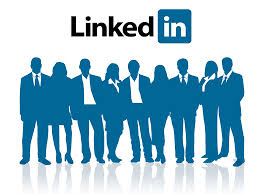The business networking site LinkedIn works on a very simple premise: connect jobseekers with companies so that users can gain access to jobs and recruiters can hire the most qualified candidates. Unlike sites such as Monster or Indeed where companies post a job listings and in some cases provide career counseling, LinkedIn stresses the importance of professional networking. Subsequently, LinkedIn not only offers a venue for interested job hunters to search for available offerings, the website also fosters development and communication among professionals within a certain career field–not only allowing for the creation of more meaningful business contacts but also for the excha-
 nge of valuable ideas of best practice for peers and future business contacts. According to the site’s Wikipedia page and the technology publication TechRepublic, LinkedIn has become the “defacto tool for professional networking” in today’s job market.
nge of valuable ideas of best practice for peers and future business contacts. According to the site’s Wikipedia page and the technology publication TechRepublic, LinkedIn has become the “defacto tool for professional networking” in today’s job market.
LinkedIn was first founded in December of 2002 by Reid Hoffman, former PayPal COO, as well as other nine other founding PayPal and Socialnet members. Early funding for the website was provided by Sequoia Capital, a venture capital firm, in 2003. The website’s membership grew quickly; three years after its launch in 2003, LinkedIn reportedly boasted 20 million members. The site also expanded its influence abroad, opening an International Headquarters in Dublin, Ireland in 2010. Now, according to LinkedIn’s “About Us” page, the site has 400 million members from all around the world with offices in London, Dubai, Amsterdam, Milan, and 11 other cities across the globe. Additionally, the site is available in 24 languages. One of the sites more interesting features is the ability to advertise your profile in a language other than your native one, expanding your professional network onto a global scale. In more recent years, LinkedIn has been embroiled in controversy regarding the automatic access the site uses to connect users’ e-mails with their profiles in addition to a hacking scandal where 6.4 million users’ passwords were stolen and published online. The company went public in January of 2011.
When someone first signs up for the site, they are asked to create a user profile that serves as their resume or CV for future employers or others to view. Using the profile, members can form professional connections that emulate the kind of business contacts one might establish in the real world. Users create these “connections” by sending requests to existing users or sending invites to non-members. LinkedIn also suggests connections by connecting the LinkedIn profile to an e-mail address book that is given when the account is created, or a Facebook profile. Users also have the opportunity to connect with their other social media platforms, affording the possibility of maintaining their professional brand across multiple websites including a professional blog or Twitter page. Users can also connect websites or upload digital samples of their work to be viewed on their profile.
Not only does LinkedIn provide a space for like-minded professionals to connect among one another, the media platform also serves as a forum for those same people to share ideas and newsworthy articles across the discipline. The LinkedIn Groups feature in particular demonstrates this strength. Members can join groups as basic as alumni networks or as specific as ‘Genealogy Consultancy,’ a group where hobbyists and professional genealogical researchers can get together and talk shop. The genius of these groups is that they provide a low-stakes opportunity to better one’s professional practice through interaction with professionals of various experience levels. They also provide a forum for people to discuss the difficult questions that emerge through their work–allowing members of a particular group to provide support or healthy debate for issues of best practice. It also provides a platform to see how the same processes might work at another company, or even in another industry.

The National Council on Public History’s LinkedIn Group
The feature is particularly useful for the public historian. With a seemingly endless network of history hobbyists and professionals alike, LinkedIn Groups provides a unique opportunity for museum professionals and employees at cultural institutions to compare/contrast how things are done at their institutions versus the field at large. This feature might be particularly useful for smaller or newer institutions to network with large museum and museum networks to see how professionals at those museums handle certain scenarios. The American Alliance of Museums group on LinkedIn often poses essential yet difficult questions for the museum professional. The most recent queried, “Is taking time to make meaning just quibbling?” Similarly, the National Council on Public History’s group routinely posts articles of recent newsworthy events in the public history world, as well as posts requests for papers and academic work to be displayed at symposiums across the country. In this way LinkedIn not only allows for the immediate connectivity of public history professionals, but also fosters their professional development. This informal eduction helps enrich the field of public history further so that museum staff can provide better programming for the museum-going public and as a result increase meaningful outreach.
Ellen, I think you point to an important aspect of LinkedIn and other social networking sites: the ability to connect with like-minded individuals through affinity groups. So much of social media is focused on connecting with people that you already know offline. But forums like LinkedIn groups encourage users to connect with people outside their normal social circle whom they might never meet otherwise. As you point out, these forums can be excellent sources for informal discussion, advice-seeking, and information sharing.
LikeLike